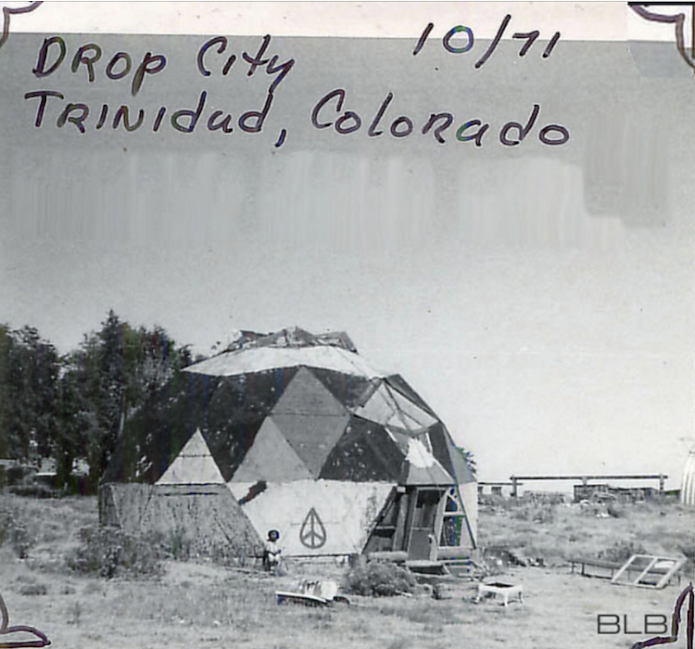Andy Webster
Signals From Another World
101 Songs of Soil
101 songs with soil in the title played back to back for the duration of a 1980's disco weekender
Over four days at Falmouth University, UK, the RANE research group in collaboration with The Centre for Contemporary Art and the Natural World (CCANW) ran a project called the Soil Culture Forum.The forum was part of a programme of events which included exhibitions, residencies, workshops and socially engaged activities, which proposed to re-examine the cultural and environmental importance of soil.
A key focus of the forum was to investigate ways in which the arts can help to raise awareness for the plight of global soils. The forum contended that enthusing people through art and literature on environmental issues can do what orthodox activism often struggles to do: inspire and open minds to creative possibilities that can engage communities.
The Chromatic Colour Jukebox (R.O.Y.G.B.I.V)
Show 4
Radio Tours
 |
Droppers
Gene and Jo Ann Bernofsky and Clark Richet, University of Kansas graduates founded a settlement in Colorado known as ‘Drop City.’ Drop City and its inhabitants, ‘Droppers’, became a space for artists, inventors, and free thinkers who wished to celebrate and practice experimental ways of living, free from the conformities of mainstream life.
The Droppers built dwellings inspired by the ideas of Buckminster Fuller, in particular his advocacy of geodeisic domes. The domes were improvised, using salvaged materials including car parts, waste ply and reclaimed timber. The Drop City domes deviated from Fuller’s precise architectural vision, acting as kind of free-form mutation of his ideals.
Reflecting upon and practically exploring the Dropper’s approach to shelter building formed the starting point for the project and ‘Droppers’. Ray & Webster produced a large scale dome replicating and reenacting many of the processes used to build the original structures. These processes became a platform to reflect on the Droppers approach to life and art, to consider how this might be relevant today or what might be the contemporary embodiment of this? The dome structure produced a space for discussions, workshops, psychedelic discos, film screenings, and to house a library and jukebox, each aspect contributing to ongoing questions about counter culture, psychedelic consciousness and its relation to the contemporary context.
Droppers was a collaboration with Darren Ray and first shown at the Old School Room Project Space, Somerset, UK, as part of the OSR Projects Lobster Trap Commission.
x
Scratch Record Collective
The work consists of 12 record turntables, 12 amplifiers and speakers and a collection of 133 vinyl albums. The inspiration for the format of the project was the work 33 1/3 by John Cage which he first performed in 1969. For 33 1/3 Cage requested that a dozen or more turntables should be set out in a gallery with 200 or more vinyl records. Visitors to the gallery were asked to act as dj's and play several albums simultaneously to create a real-time improvised musical mix. Cage conceived the works score as being performed by audience participation.
Crazy Tourist
Crazy Tourist - A day spent searching for and collecting lost balls whilst walking to the source of a river.
Crazy Tourist is an installation of 98 lost balls collected during an expedition from the Welsh Harp reservoir towards the source of the Dollis Brook, London, and a film that documents this made with collaborator Jon Bird.
The expedition was steered by the constraints of searching for and collecting lost balls, and this resulted in a very particular encounter with the river and its environs. The majority of time was spent foraging through overgrown undergrowth, wading through mud and filthy waters and exploring under and around bridges, sluice gates and hedgerows.
An objective was to explore how such constraints might structure and organise one’s actions so as to alter the way one walked through, perceived and was present in the landscape.
Balls were bagged and carried up stream until night fall. After several hours of travel 98 balls had been were spotted and collected, many others were no doubt missed.
The work was completed through the balls being released / scattered across the gallery floor.
A Minor Miracle
A Minor Miracle consists of 13 letters shaped from salvaged plywood boards, 3500 LEDs, and 35 solar panels.
Battery packs within solar the panels are charged throughout the day and as daylight fades the LEDs light up to illuminate the text. The duration of the illumination is dependent on the amount of sunlight that has charged the solar panels during the day. If there has been plenty of sunlight, then the lights work well and the letters can be clearly seen at night. However, if it has not been sunny, then the lights begin to fail and the text becomes unreadable. The failing of the text, its subsequent illegibility demonstrably reveals the contingencies of the technologies used and also appears to signify the failure of the intentions of the work.
The work was made during a residency in Miterdale Forest, Cumbria, UK, as part of the ‘Good Life’, a project devised by artists Derek Tyman and Emma Rushton in collaboration with Lanternhouse, Ulverston, UK. The location of the residency was a reconstruction of Thoreau’s cabin built by Tyman and Rushton and situated in the heart of Miterdale Forest. Using the writing of 19th Century American philosopher and abolitionist Henry David Thoreau, they invited artists, activists, writers, musicians and others to respond to his ideas on self-sufficiency, politics and nature.








































